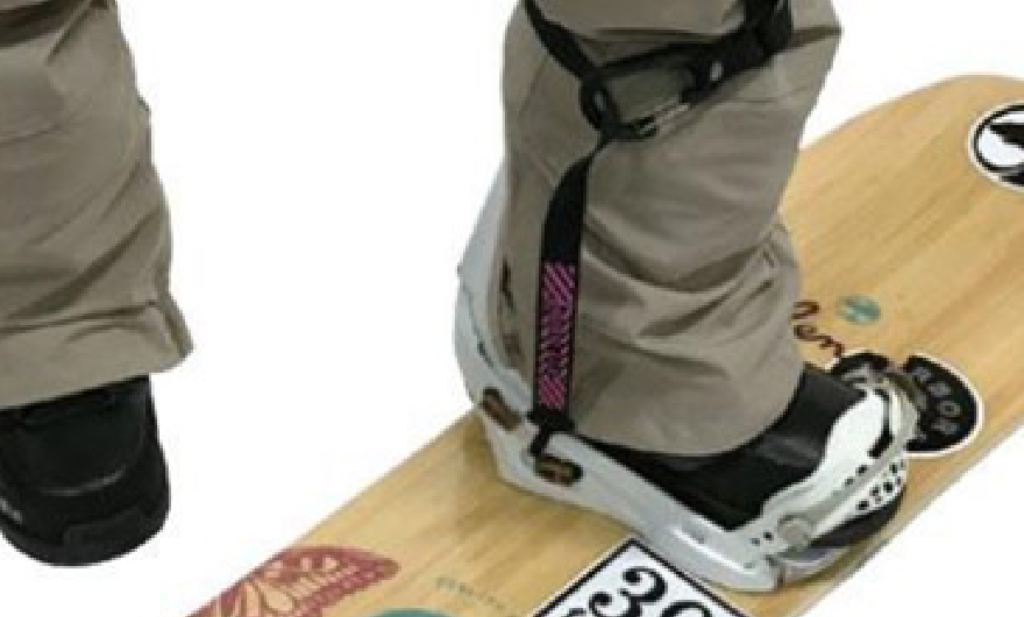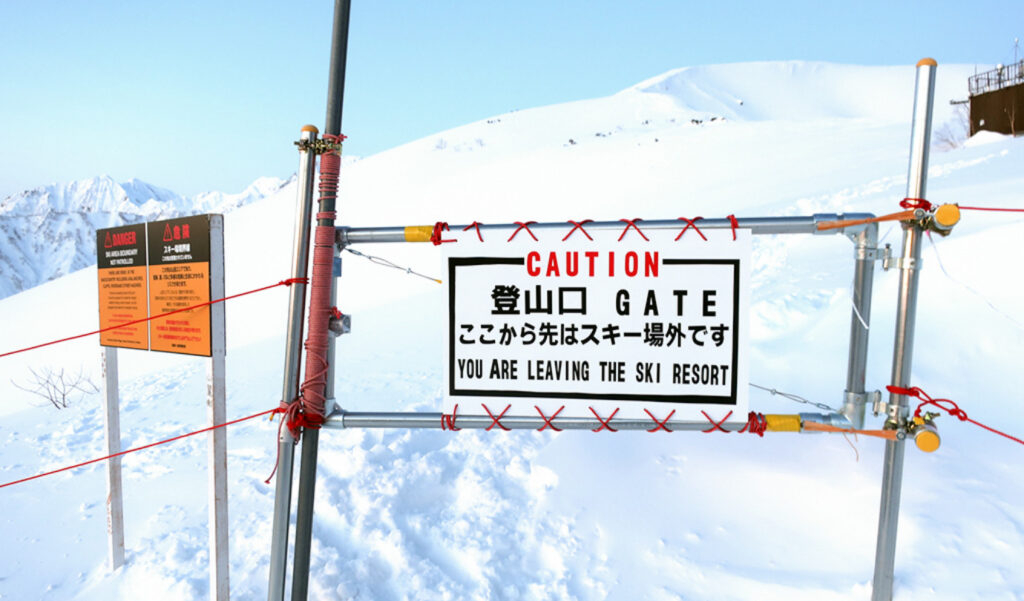Pay attention to “boundary” and “closed area” signs.
The poles painted with yellow and black on the upper side are “boundary” signs while others painted with yellow are “closed area” signs of ski resorts in Hakuba Valley.
Observance of signs, ropes, and boundaries are prescribed by “Safety Standards for Snow Sports” which is a rule common throughout all ski resorts in Japan. It is skiers’ and snowboarders’ obligation to check the map, grasp the boundaries and closed areas, and ski or snowboard only on permitted trails. If you are not sure about boundaries, please ask the ski patrol or ski resort staff.


Control your speed while skiing or snowboarding.
Collisions usually happen because skiers or snowboarders are sliding too fast. The most
important thing regarding safety is to control your speed and acknowledge the situation
around you and to avoid risks. In addition, meeting points of trails, lift top, and base areas
are designated as “slow zones”. Be sure to slow down sufficiently in these areas. To help prevent accidents, make sure to ski or snowboard at a speed that allows you to avoid or stop when necessary. Regarding the importance of speed control, please check and follow the “10 FIS Rules” and “Safety Standards for Snow Sports” for the safety of yourself and your others.

Pay attention to your surroundings and check the situation.
Many collisions occur when you do not fully check your surroundings. Be aware of your
surroundings when you are starting downhill and if you need to stop on the slope, move aside and do not stop where you obstruct a trail, or are not visible from above. Also, if you notice children or families skiing, please slow down.

Leashes are mandatory for snowboards.
Leashes prevent boards from accidentally sliding downhill and crashing into people or objects. In the case of a runaway snowboard, the owner of the board will be held liable for
any costs associated with injuries and damages caused during the incident. Sitting on your
snowboard and riding it like a sled or toboggan is also prohibited.

Wearing a helmet is highly recommended.
Wearing a helmet has been proven to reduce serious head injuries. The latest models have
become more comfortable, lightweight, breathable, and customizable. It is highly
recommended to wear a helmet, especially for children as well as skiers and snowboarders
enjoying terrain parks.

Do not enter deep powder areas alone.
Death caused by suffocation happens in areas of deep snow every year. As for tree runs with
deep powder, there are also accidents caused by multiple reasons including tree collisions.
Please bear in mind that it is safer to ski or snowboard with someone when you go for
powder or tree runs. A rescue whistle can be useful in an emergency.

Ski resorts are off-limits outside operating hours.
After operating hours, slopes and courses are dangerous due to snow grooming and snow
removal work. Camping outside of designated areas is also prohibited.

Violating ski resort rules will result in the suspension of your lift ticket and you will
be asked to leave the resort.
Guests in ski resorts are obliged to present their lift tickets if requested by the ski patrol or
lift staff. Skiers and snowboarders who violate rules will immediately have their lift tickets
suspended and be asked to leave the resort.
Contact ski resort staff immediately in case of emergency.
Please contact ski resort staff or ski patrol as soon as possible when an emergency occurs.
There is an emergency telephone number for every ski resort. You can find the telephone
number at the ticket office or on the website of each ski resort.
Check the Terms and Conditions of ski resorts for further information.
Guests at ski resorts are subject to the terms and conditions set by each ski resort. In
addition to safety matters, the terms and conditions also include matters regarding your
contractual relationship with ski resorts. Please read through them carefully. You can find
this information at the ticket office or on the website of each ski resort.










